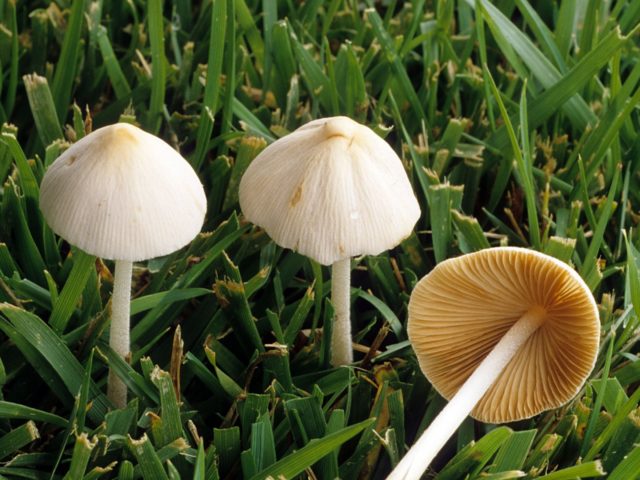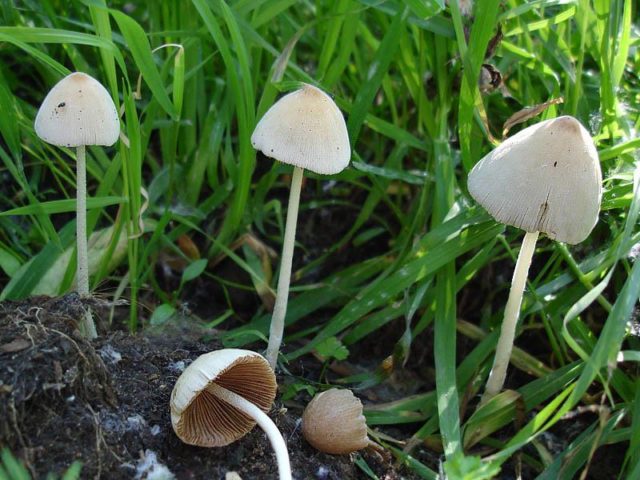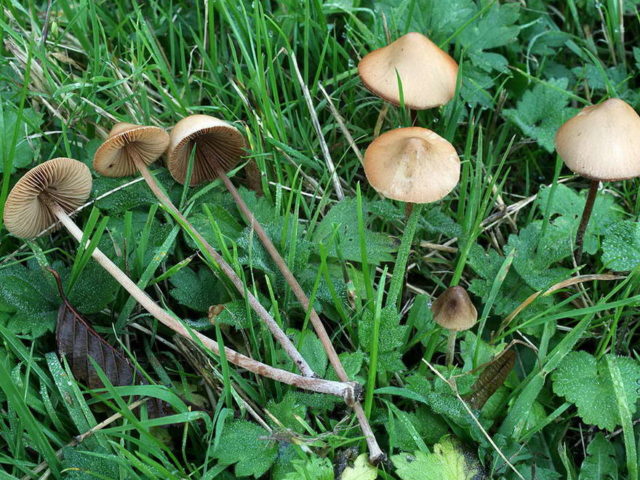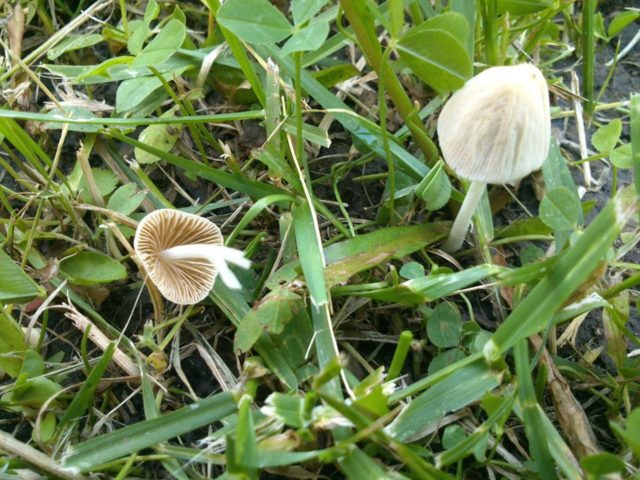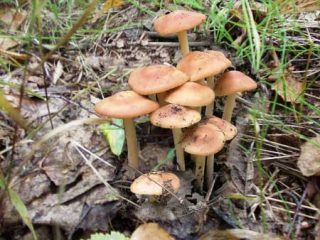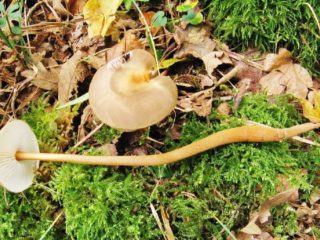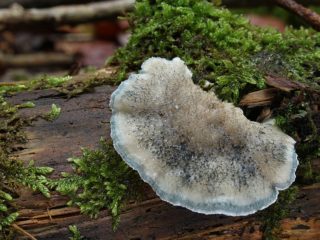Content
White cap is a mushroom little known to a wide circle of amateur mushroom pickers. This is because it is not suitable for consumption. In Latin, the name sounds like Conocybe albipes. Belongs to lamellar mushrooms. It is part of the Bolbitiev family, the genus Konotsibe.
What white caps look like
The white cap is small in size. The diameter of the cap barely reaches 3 cm. It is conical in shape; as the fruiting body grows, it changes to bell-shaped, sometimes to convex. The edges are thin, raised. A characteristic feature is the presence of a high tubercle.
Above, the cap is slightly wrinkled, matte. The color ranges from gray-white to yellowish. In high humidity conditions, the color changes to a grayish brown, and the characteristic tubercle remains yellowish.
The pulp is thin and tender. Emits a slight unpleasant odor. The color of the flesh is white with a yellow tinge.
The plates are adherent, wide. In young specimens, they are gray-brown, in adults, they are rusty and brown-brown.
The legs are cylindrical, straight, thin and long. Reaches 8-10 cm in height. Their diameter is about 2 cm. They are hollow inside, with a pronounced nodule at the base. The color of the legs is white.
Where the white caps grow
Favorite growing places are wide, open spaces. Mushrooms can be found on soil and in grass. They often grow along roadsides and even on lawns.
There are single specimens. Often, mushrooms form small groups.
The fruiting period is in July, August and September. Sometimes fruiting bodies appear a little earlier, at the end of June. It is quite rare.
Is it possible to eat white caps
There is no exact data on whether it is safe to eat white caps in food. The edibility is unknown. For this reason, experts classify the mushroom as an inedible variety, and they do not recommend tasting it.
How to distinguish white caps
The white cap is not always easy to distinguish from its "relatives": the large-headed conocybe and the milky-white conocybe:
- Big-headed Konocybe - an inedible species of miniature size. The conical hat reaches a diameter of 1-2 cm. Its color is brown with a reddish tint. The hat is ribbed with translucent plates. Sits on a dark brown leg. Most often found in grass, likes abundant irrigation. But the life of the fruiting body is short.
- Conocybe milky white also not eaten. A cap with an uneven edge, whitish, with a yellow tinge. It differs in small size - up to 2.5 cm. In young specimens, it is closed, in the form of an egg. Then it takes on a bell-shaped form, never fully revealing. The leg is straight, very thin and rather long, about 5 cm. The flesh is tender, with yellowness. There is no ring on the leg. Fruiting all summer, found in the grass. The life of fruit bodies is no more than 2 days.
Conclusion
Finding a rare and, moreover, a miniature mushroom white cap is not so easy. His life span is short. And for lovers of "quiet hunting" it is of no value. Known mainly to specialists.
